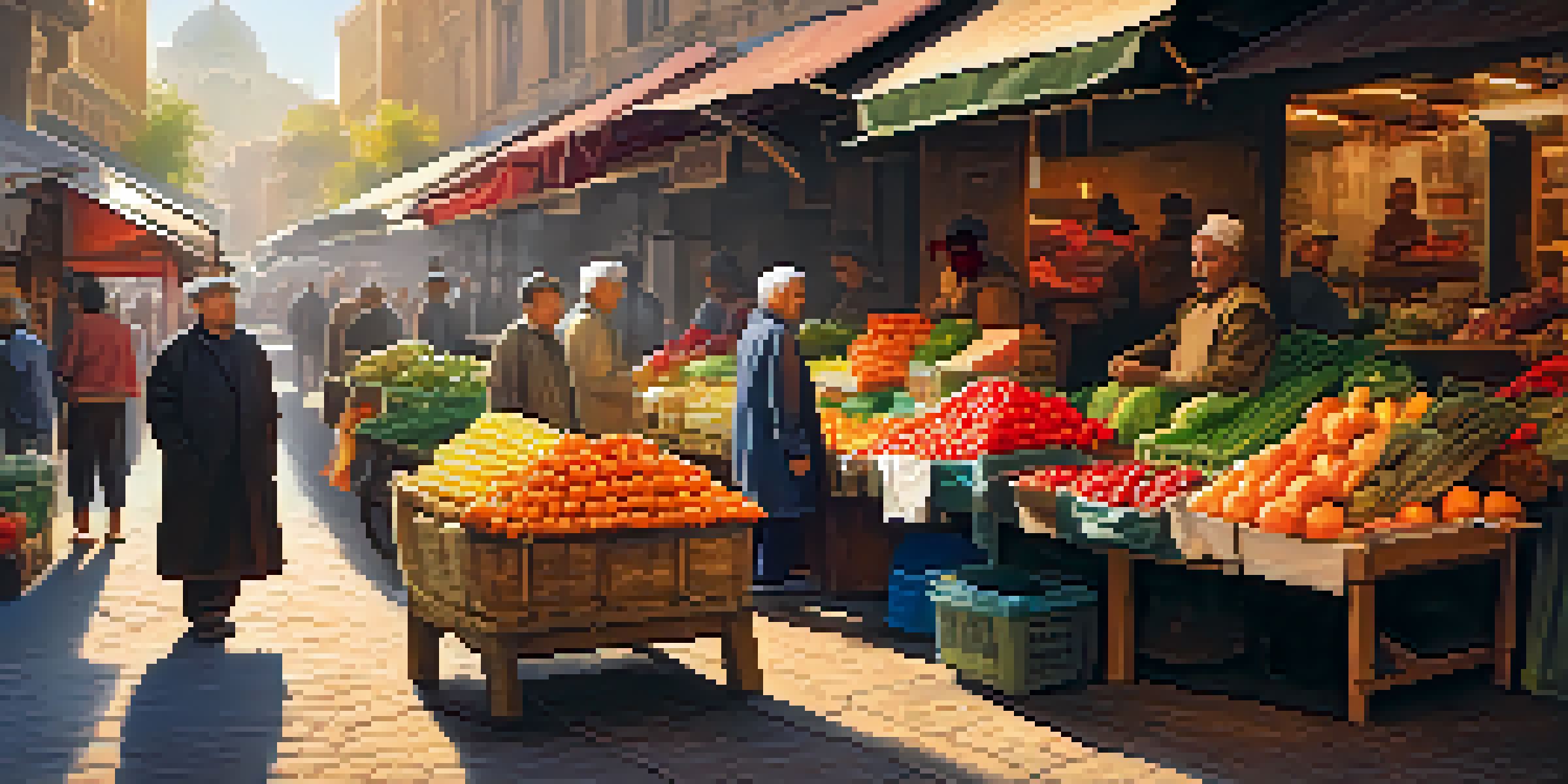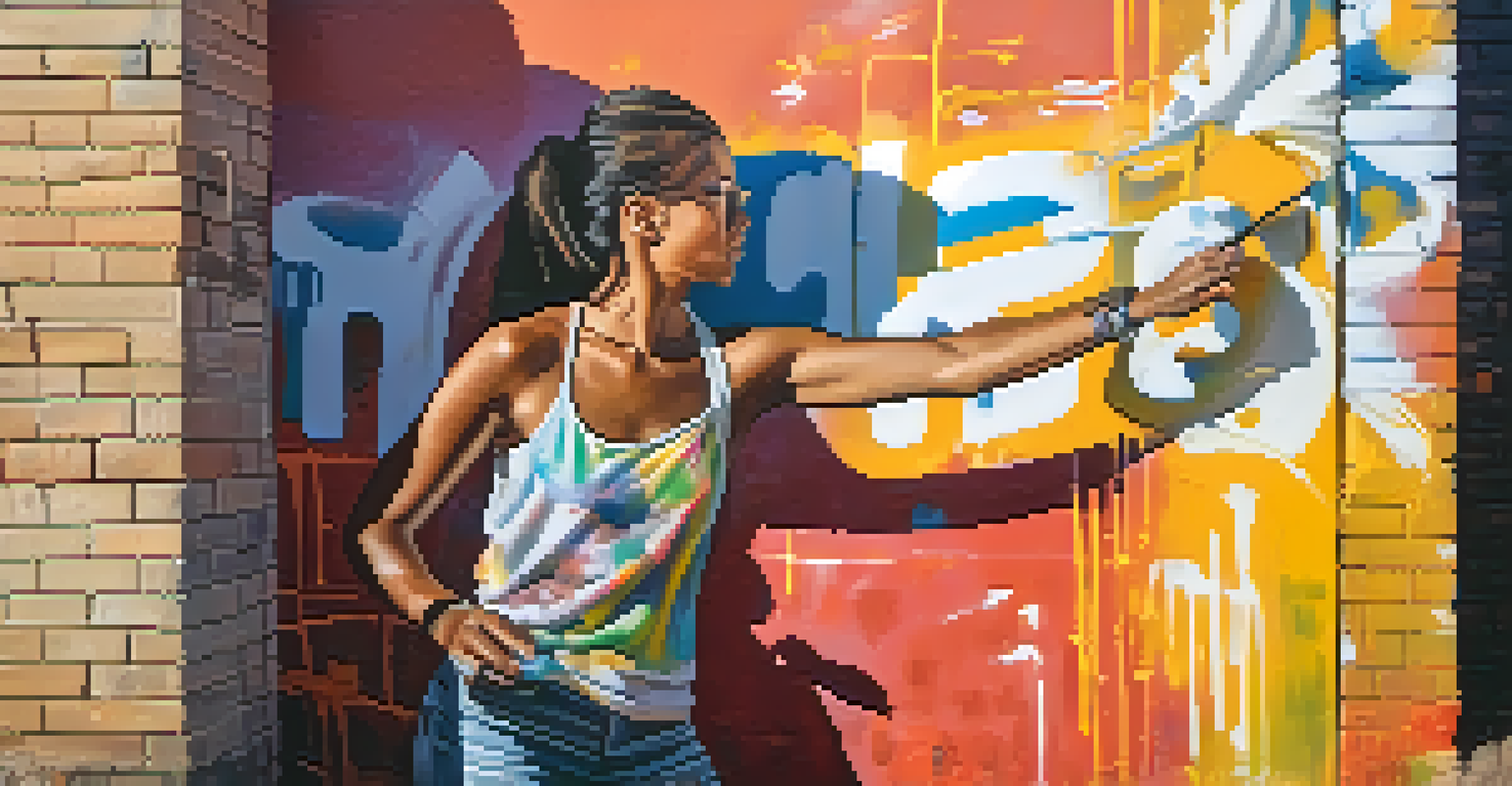How to Photograph People While Traveling: A Guide

Understanding Your Subject: Connect Before You Click
Before snapping a photo, take a moment to connect with your subject. Whether it’s a local vendor or a fellow traveler, engaging in conversation can help establish trust. A genuine smile or a shared story can lead to more natural and authentic photos.
A photograph is often the only way to communicate without words.
Consider asking questions about their culture, traditions, or daily life. This not only enriches your experience but also makes your subject feel valued. When people sense your interest, they’re often more comfortable in front of the camera, allowing you to capture their true essence.
Remember, the best portraits often go beyond the surface. Look for moments that convey emotion or tell a story. By building a rapport, you’ll create a more relaxed atmosphere, leading to stunning, candid shots.
Choosing the Right Location for Dynamic Portraits
The backdrop of your photograph can greatly influence its impact. Look for locations that reflect the culture or environment of the area, such as vibrant street markets or serene parks. These settings not only provide context but also add depth to your images.

Pay attention to the lighting conditions as well. Natural light, especially during the golden hour—shortly after sunrise or before sunset—can create soft, flattering illumination. Avoid harsh midday sun that can cast unflattering shadows on your subject’s face.
Connect for Authentic Portraits
Engaging with your subject builds trust and leads to more genuine and natural photos.
Don’t hesitate to experiment with different angles and perspectives. Sometimes, a slight change in position can transform a standard portrait into something extraordinary. By being mindful of your surroundings, you can create visually captivating images.
Mastering Camera Settings for Perfect Portraits
Understanding your camera settings is crucial for capturing beautiful portraits. Aim for a wide aperture (like f/2.8 or lower) to achieve a blurred background, which makes your subject stand out. This technique, known as 'bokeh,' draws attention to the person rather than the surroundings.
The best thing about a picture is that it never changes, even when the people in it do.
Additionally, keep your ISO as low as possible to reduce noise in your photos. However, if you’re shooting in low light, you may need to increase it. Just be mindful of the trade-off between light sensitivity and image quality.
Don’t forget about shutter speed, too. A faster shutter speed can help you avoid motion blur, especially if your subject is moving. By mastering these settings, you’ll be well on your way to capturing sharp and stunning portraits.
Utilizing Composition Techniques for Engaging Photos
Composition plays a vital role in photography, guiding the viewer’s eye and creating balance. The rule of thirds is a great starting point; imagine your frame divided into a grid and position your subject along these lines or at their intersections.
Leading lines can also enhance your images. These are natural lines in your surroundings that draw the viewer’s eye toward your subject, such as a pathway or a row of trees. Incorporating these elements can lead to more dynamic and interesting compositions.
Master Camera Settings for Clarity
Understanding key camera settings like aperture and shutter speed is essential for capturing sharp and beautiful portraits.
Experiment with framing as well. Use elements like doorways or branches to create a natural frame around your subject. This technique adds depth and context, making your portraits even more visually appealing.
Capturing Candid Moments: The Art of Spontaneity
While posed portraits have their charm, candid shots often tell a more authentic story. To capture these moments, be patient and observant. Watch for interactions, laughter, or gestures that reveal the true character of your subject.
A great way to encourage candid moments is to engage with your subject without the camera in hand. Once they feel comfortable, discreetly raise your camera to capture spontaneous expressions. This approach often results in genuine emotions that resonate with viewers.
Remember, the key to successful candid photography is to blend in with the environment. Avoid drawing too much attention to yourself, so you can document real, unscripted moments that reflect the essence of the place and its people.
Respecting Privacy and Cultural Sensitivities
When photographing people, it’s crucial to respect their privacy and cultural norms. Always ask for permission before taking someone’s photo, especially in cultures where this is particularly important. A simple smile and a request can go a long way in ensuring a positive experience.
Be mindful of the local customs and traditions regarding photography. Some places may have restrictions, while others may welcome your lens. Researching beforehand can help you navigate these sensitivities and avoid unintentional disrespect.
Respect Privacy in Photography
Always seek permission and be aware of cultural sensitivities to ensure a respectful photography experience.
When in doubt, opt for candid shots that capture the essence of the environment without focusing on individuals. This way, you can still tell a compelling story without compromising anyone’s comfort.
Editing Tips to Enhance Your Travel Portraits
Editing is an essential part of the photography process, allowing you to enhance your images while maintaining their authenticity. Start by adjusting the exposure and contrast to bring out the details in your subject. Subtle tweaks can dramatically improve the overall look without making it seem over-processed.
Consider using presets or filters that align with your personal style. These can save time and ensure a consistent aesthetic across your travel photos. However, be careful not to overdo it; the goal is to enhance, not to overwhelm.

Lastly, don’t forget to crop your images if needed. A well-cropped photo can improve composition and draw more focus to your subject. With thoughtful editing, your travel portraits can truly shine.